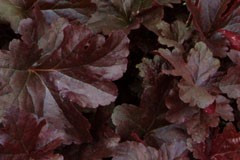- Out-of-Stock



Mounding variety with reddish purple foliage, and white flowers. In fill plant for woodland with epimedium, myosotidium and Primula beesiana.
Mounding variety with reddish purple foliage, and white flowers. In fill plant for woodland with epimedium, myosotidium and Primula beesiana.
Data sheet
One of my favourite salvias, which always looks great in the autumn. The flowers are lime-green and in exhuberant clusters like something tropical. Responds well to good soil.
Strong upright variety great for amongst grasses and floral work. Best on drained soils. Cut to the ground in winter every 2-3 years when growth congested.
Evergreen Iris from Burma, China and Japan. An attractive species with fans of leaves and light blue flowers in early summer. I find the foliage effect of this plant very useful when combined with grasses, sedums and euphorbias. Interesting large seed heads.
Vigourous form of white wind flower for shade or part sun, this is a variation with slightly narrower multiple layered petals. Drained fertile soils improve flowering performance.
Still one of the most graceful cultivars with deep blue flowers edged silver.
Cultivated form of glomerata with especially rigid upright flower stems and clusters of divine purple flowers. Useful for cutting and clumps well between roses and in the herbaceous border.
Low mounding plant with silvery finely cut foliage and white daisies. Native to Sicily, extremely drought tolerant avoid over watering and wet areas. Cut back occasionally after flowering.
Vigourous old fashioned mop top type, pure white flowers, useful for specimen or border plantings. Strong stemmed upright variety, useful for floral work.
Traditional hedging plant which looks good all year round and forms compact tight growth. Ideal for edging pathways, borders and formal plantings.
Spreading species from Korea with large white bells speckled pink. Attractive glossy foliage.
Silvery succulent, ideal in dry and exposed conditions including coastal situations. Flowers are coral pink during winter and the bushy form of this variety associates well with Stipa gigantea, aeoniums, fascicularia, and sedums.
An excellent tall perennial for a sunny dryish position with spikes of interesting whorled beige-pink flowers. Cut back to crown after flowering to rejuvenate.Only a few in stock so order early.
A wild Paeonia from the Caucasus from Ukraine to Romania with deep tomato red flowers and finely dissected foliage. This is a dwarf species which prefers fertile but drained conditions, and needs to dry off in summer after the growing period. A rare treasure.
Tall perennial suitable for clay soil types, winter deciduous and frost resistant. Light blue flowers in summer on tall stems, clumping and easy.
Old fashioned pink variety for full sun, ideal between roses or for mass planting. Prolific grower and will grow well in clay or sandy soils.
More sun tolerant than other hydrangea varieties, but adaptable to part shade also. Beautiful deciduous variety with densely clustered white panicles in summer. Lovely feature plant behind perennials with deciduous viburnums, or grouped in woodland settings.

Mounding variety with reddish purple foliage, and white flowers. In fill plant for woodland with epimedium, myosotidium and Primula beesiana.